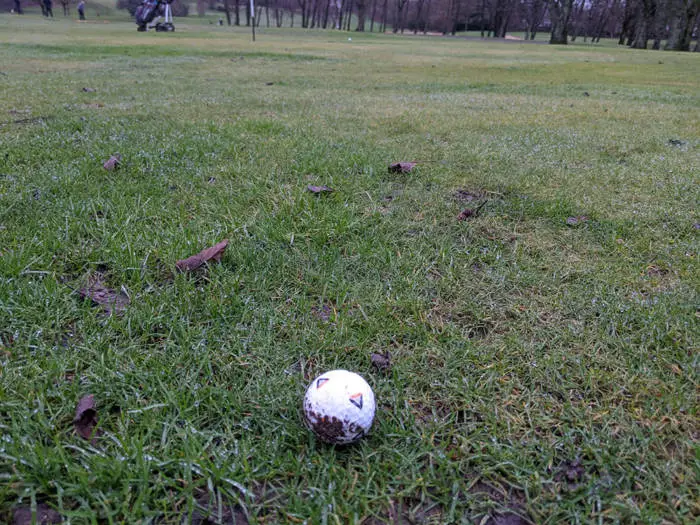What Is A Mud Ball In Golf?
If you’re somewhat of an avid golfer then you already know how irritating it is when you get a mud ball. If you’re not an avid golfer you’ll just be confused why people get angry at a “mud ball”.
Well luckily for those who don’t know what a mud ball is and the irritation that comes with it, then just keep reading.

What is a mud ball?
A mud ball is when any kind of debris from the golf course sticks to the golf ball.
They usually happen when the conditions of the golf course are soft, usually after a bit of a downpour or a period of wet weather.
Mud balls are unpopular with golfers as they can have significant effects on the trajectory or the actual flight of the golf ball. It can even impact the distance the ball eventually travels through the air.
However, the main problem with a mud ball is that the impact it has on the flight of the ball is largely unpredictable.
Often you’ll hear a golfer immediately claim the mud on the ball has caused some kind of issue with their shot, causing it to fly to one side or just generally not going where they expected it to.
How does mud affect a golf ball?
Whilst the impact of the mud on the ball to ruin a potential shot is unpredictable, there are certain principles you can follow which give you the best chance of predicting the resulting impact.
Most of the advice is based on where the mud is located on the ball:
Mud on top of the ball – Mud on the top side of the ball will make it spin more than normal which can cause an almost balloon like effect. This generally means that the ball won’t travel as far as you predicted, so it’s worth hitting a little more club.
Mud on the side of the ball – If mud starts to rest only on one side of the ball it can change the centre of gravity of the ball. This means that depending on the extra weight that the mud causes will determine the overall rotation and curvature of the ball. It’s understood that if there is mud for example on the left side of the ball the ball will start to curve heavily towards the right (and vice versa). There is no exact knowledge of how much mud determines the ball’s ability to travel in its desired route.
Mud on the back of the ball – Like with mud on top of the ball, here the biggest impact will be the shot distance rather than a change in direction. The mud will prevent clean contact between the clubface and ball, so again, it’s worth taking an extra club.
Whilst these are good general principles, it’s difficult to determine the eventual impact as their are too many interchanging variables. A big influence on the impact of the mud on the ball is whether it stays on the ball in-flight, something that is unpredictable.
Can you clean a mud ball?
If you have ever watched any professional golf on TV, you may have caught a pro lifting the ball up to clean it before placing it in the exact same spot and taking a swing at it.
Well, cleaning the ball before taking your shot is the best way to avoid the unpredictable impact of mud on the ball. However, as a general rule, you’re actually not allowed to clean a mud ball. This is only allowed if a local rule is put in place on the golf course.
This is normally only the case if the conditions permit it, for example if the course is rather wet, the rule will be in place for the golfer to clean the mud off of the ball.
In the UK it’s common for golf courses to have a “preferred lies” or a “lift clean and place” rule throughout the winter. This allows the player to lift, clean and place the ball within 6 inches of the original spot (not nearer the hole).
However this only applied in the fairways, or on closely mown areas (fringes of greens, tees etc.). In the rough there’s no relief from a mud ball and you’ll have to play it as it lies.
In summary
Well mud balls can be infuriating for golfers especially if they feel that they are having a direct impact on the overall quality of the flight of the ball.
It’s important to identify where the mud on the ball actually is, as this will determine the general quality of the flight. Like mentioned earlier, depending on what side of the ball the mud is on will determine the overall flight of the ball. Left goes right, right goes left is an easy way to remember this.
Due to the fact that it’s difficult to determine the impact, some golf courses will offer preferred lies and the option to clean the ball before they take their swing. This rule is only enforced if the conditions on the day of the event see it as necessary, so it’s worth checking before you tee off.